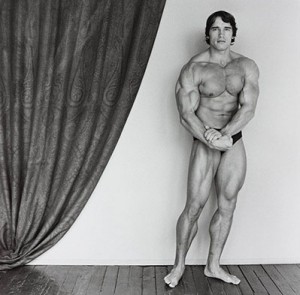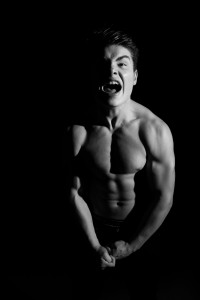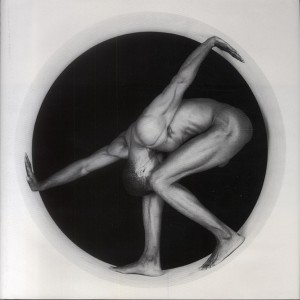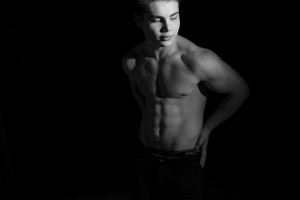Here is a link to my fnial photo book – http://www.blurb.co.uk/bookstore/invited/6220787/7abbdef161b307b1303af613eff701a76e0ed648
All posts by Emily Vetier
Filters
DECONSTRUCTING PHOTO BOOK DESIGNS
The Americans, Robert Frank
This photo has been considered one of the most influential photo books that have given inspiration to many new photographers starting out. This was produced with the help of a scholarship that allowed Frank to go on road trips across America, this was during a two year period. Frank was trying to portray American society in the post-war period. This photo book has contributed to a new style and subjective approach to documentary photography.
The Middle of Somewhere, Sam Harris

Sam Harris is an Australian photographer and educator. He self taught himself photography while he was a teenager, he turned his bedroom in London into a DIY makeshift darkroom. Harris has worked as an editorial photographer for places such as The Sunday Time and Esquire but also throught the 90’s he photographers portraits and sleeve art for numerous recording artists. While Harris’ career started in London in 1990 photographing editorial portraits and sleeve art his career changed into one of London’s leading young editorial portrait. Sam decided to abandon his career and changed it so that he could have more quality family time, in this time he turned his camera onto himself to photograph his own life. Harris’ lives his life with his two young daughters and his wife where he goes between India and Australia, which he setteled down in the forest of Southwestern Australia, Harris still continues to photography his on-going family dairy and he also runs workshops.
This photobook by Sam Harris gave me inspiration for my photobook in the different aspects of it and how i would like to lay out my images. This photo book communicates this narrative through different images of Sam Harris’ family while they are in the South West corner of Western Australia. This photobook is considered the next chapter in Harris’ on-going family dairy. It follows on from Harris’ other work called ‘Postcards from Home, made in 2008-2011, and is made around Harris’ two daughters Uma and Yali growing up, in a remote part of the world. In this photobook is has different aspects including some of the images are full blead on the pages and others have space which creates a boarder around the images to frame them. I think that this photobook displays the subject-matter of the two children growing up in Australia through the different note-pad like add ins in the photobook to make it seem like a journal. This creates almost a journal for the family in which they can look back on of their children growing up in Australia. The different text which is in the images in incorperated into the images by having other stick ins which are placed on top of the image, these are not fully stuck onto the page which makes the photobook a more realistic journal. This photobook portrays Sam Harris’ children growing up and i think that this is really interesting to see the two children growing up in Australia. This photobook also uses the journal like pages throughout the book of their family holidays and also writing which Sam Harris has wrote in different things that have happened throughout the years of making this photobook.

This photobook is a portrait photo book which is of A5 size, it is layed out like a journal which focuses on Sam Harris’ two daughters growing up, the images are mostly placed full blead onto the pages, this means that they are fully to the edges of the photobook and by doing this the photographer looses to corner of the images, however some photographers do this because it brings you closer into the image and makes you look at the different aspects of the image, rather than framing the images. However, some of these photographs in the photobook have space to frame the image usually on the top and bottom or placed in the middle, however the other parts of the image are also full blead to the edges. This is broken up occasionally by one large image on the page which fills three quarters of the page and leaves some white space on the page to frame the image, this brakes up the photobook and makes it more interesting to look at, and creates a more exciting photobook to flick through. Sam Harris’ images go across the gutter which can be said to loose part of the image as you cannot always see what is going on in a picture. Harris also does this when he has two images on a double page spread where he makes both of the images go across the gutter which creates an almost panoramic look to the images and makes you look from the image which is placed onto the left and then onto the right, almost creating like it is one single image. The relationship between the images on the different pages are linked together through a relationship of something that is similar in the images, for example one is taken of the Sam Harris and his wife looking at the stars in the sky and then the next image is of a room which has disco ball lighting on the ceiling, and this is how Harris changes between his images, through a mutual relationship between the two images. I think that all of the images that have been used are images that Sam Harris has taken over the years documenting his two daughters growing up, and there are no archival images that have been used, however there has been found material, as there are little sticky notes that his daughters have placed around and Harris has picked these up and placed them into his photo book, i think that this adds to the idea of this being a family journal. These pieces of sticky notes and journal like pages in Harris’ photo book add value to the story being told, as it adds a personal touch from his daughters which makes this a genuine family archisle.
When looking at the book title, ‘The Middle of Somewhere’ i think that this implies how these images have been taken in between two different places in the journey and the image have been taken from places in between and in India and Australia. On the first page of the photo book their is a small poem, by W.H. Davies, Leisure, 1911, this poem is about life and how time passes by fast and i think this represents how Harris’ daughters are growing up fast before his eyes and these image show their childhood years. In the journey like pages, ‘no yesterdays, Notes from Somewhere’ this is showing all of the places that they traveled around showing their journey through the years, remembering the places they visited. This is also present in the other journal like pages in Harris photo book ‘Travelogue’ which shows them in India – Australia between 2002-2006, i think this is so that it is separate from the rest of the story as this was a break from their usual life, in this there are images of their holiday but also includes the mother giving birth to one of the daughters. There are no captions on any of the images, i think this is so that the images are looked at as a whole and the writing which would be placed with the image would distract from the images. In the back on the book there is a page which says ‘Many Thanks’ this is where Harris says thank you to everyone involved in the process and there is a picture of the family in the bed, this image is not stuck to the page



ESSAY
Essay question:
How has ancient Greek statues influenced the perception of the male form, with reference to other artists regarding how they express the male physique.
“Ancient statues are looked at and not seen” – James Davidson
When people imagine how they want their body to look like, we don’t usually think that our inspiration came from Greek sculptures, usually this has come from either internal or external forces that have created our ‘obsession’ with us having the ‘perfect’ body. When looking at Greek sculptures it is hard to not notice there “superb imperial torsos” [1] and I think that when noticing this it is clear where males have their aspirations for the ideal body from. Even from around 438BC it is obvious that this idea of the ideal body was formed, younger generations are now being influenced by this idea and there is a growing increase in the amount of younger boys and girls who are entering the gym to try and improve their bodies. Also when looking at the photography that takes place involving the male physique you mainly come across media campaigns or on the other end of the scale body building competitions, this is where the body builder will use other aspect to improve the appearance of their body, for instance fake tan to make them look more defined and the use of anabolic steroids to enhance their bodies, the photographer will also usually use harsher lighting to improve the aesthetical appearance of them. 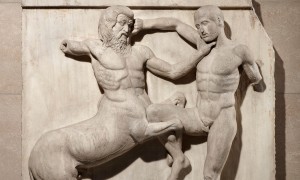 When looking into what I wanted to focus on for my personal study, I thought it would be interesting to look into why younger males over the past few years have become increasingly interested in working out in the gym. As my subject is a regular gym goer, I am going to study him by taking images of his gym workouts, what he eats, but I also want to take a studio shoot, so that I can take images that are similar to ones that would be featured in a magazine spread. I am going to do this so that I can see what younger males do to achieve the perfect body which they desire, and how much hard work they need to put it to achieve it. I am planning on asking a questionnaire around my subject and his friends but also some females as to why they go to the gym, and what motivates them to go. By asking these sorts of questions I will gain an insight into whyyounger generations are taking an interest into the gym. I will be looking into what affects their characters and what goals they have in life, as usually they have gym goals that they want to reach.
When looking into what I wanted to focus on for my personal study, I thought it would be interesting to look into why younger males over the past few years have become increasingly interested in working out in the gym. As my subject is a regular gym goer, I am going to study him by taking images of his gym workouts, what he eats, but I also want to take a studio shoot, so that I can take images that are similar to ones that would be featured in a magazine spread. I am going to do this so that I can see what younger males do to achieve the perfect body which they desire, and how much hard work they need to put it to achieve it. I am planning on asking a questionnaire around my subject and his friends but also some females as to why they go to the gym, and what motivates them to go. By asking these sorts of questions I will gain an insight into whyyounger generations are taking an interest into the gym. I will be looking into what affects their characters and what goals they have in life, as usually they have gym goals that they want to reach.
Eadweard Muybridge’s looks into the idea of capturing movement within an image, this idea is called chronophotography, this type of photography was invented for scientists to study how the human body worked while it moved. One of the first chronophotography images was of a horse which is galloping, showing how at one point all four of the horse’s hooves are off the floor. This concept can be related to when looking at image of the physique and how movement changes how the body is displayed in an image. Using similar techniques to how body builders improve the appearance of their body, males make sure that they have their torso and other muscles in their body tensed so that they appear bigger. I think that this can also be related to how males unconsciously feel that they have competition between other males to have the best body, this may be to compete to get girls, or could be to impress other men. In relation to Greek statues they can be seen as one frame of the movement, and the muscles that the Greek sculptures are showing shows the statue capturing the movement. 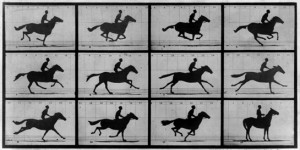
In Robert Mapplethorpe’s book ‘Robert Mapplethorpe and the Classical Tradition’ he focuses on images from around the 16th century of Greek classical structures, mostly consisting of the male physique. The sculptures are very muscular, which when taken in the 16th century it is not something that you would think everyone would be interested in or aspiring to look like. Also these images from the 16th century raise questions as to whether this is why people nowadays have been so interested in going to the gym and transforming their body from hard training and eating a strict diet. Mapplethorpe’s images consist of his own images of body builders, most of which are naked and taken from different angles. These images of the male physique can be considered to show how contemporary men aspire to look like, which is why younger men are spending more time in the gym trying to improve their body. When asking my subject why he started going to the gym he said it was to “get bigger because he was scrawny” and also initially to “impress girls” I also asked some of my subjects friends and all of them said that it was for them to “get bigger” and to “build muscle”. I think that it is interesting in how the images from the late 16th century show muscular men, and it raises the question as to whether men have always felt that they need to look like their idol, the person they aspire to be. ‘I have boundless admiration for the naked body. I worship it… sometimes, looking at a model, you think you have found nothing. Then, all at once, little by little, nature reveals itself, a strip of flesh appears, and the shred of truth conveys the whole truth and enables you to rise at a single bound, to the absolute principle of things’[2], Mapplethorpe arguably implies by him having admiration for the naked body that he believes the body to be a sculpture, of which something that can be moulded into something that you want it, as if the human body is a piece of art. Furthermore I think that it can be argued that men consciously do not think that they are aspiring to look like their idol, but unconsciously they think that this is what they need to look like, to look like the ‘perfect’ man, with an amazing physique. I think that social media also has an influence on how people consider their bodies, as unconsciously we desire to look like them as they are in the public eye. Articles that are in magazines show the men to be muscular, and this is what they post as to what is the ‘perfect form’, and the main aspect of the image is the male’s torso.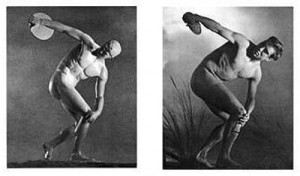
In regard to my images I was greatly influenced by Robert Mapplethorpe’s images and through this I took images in a studio to try and get similar quality images. Through this I got my subject to pose in different positions to try and show off his muscles, to try and show how he has been influenced by the media and also other men who have been around him. I used one-point lighting to take this image to create deep and dark shadows to accentuate the muscles and make them stand out more, as Joachim Ladefoged did in his monograph called ‘Mirror’ which showed body builders before their competition doing exercises to build up the appearance of their muscles. In my image I wanted to get the oblique’s showing as I think that this, alongside the desired six pack is what men aspire to look like. By using one-point lighting the shadows are deepened and the muscles are highlighted accentuating them. I chose to change this image into black and white because I think that it shows direct link to Robert Mapplethorpe’s work as most of his images are in black and white, and I think that it makes the images appear more professional.
I think that bodybuilding competitions are a way for men to show off all of the hard work that they have put in to get their desired figure, and I also think that for some men going to the gym is their hobby and they do it because they enjoy it, and because going to the gym makes them feel better, on the inside and on the outside. Personally I go to the gym and I am very interested in living a healthy lifestyle and doing things that make me feel good about myself. In comparison to men I think that women usually go for different reasons, I asked some girls who said they go “to lose weight, tone up and to feel good about themselves when they wear something”, whereas when I asked my subject and his friends why they go to the gym they said it was “to impress girls and to compete with other men”, but they also go to “feel better about themselves”. When going into the gym it is hard not to notice the growing increase in younger men and women who are going into the gym, mainly male dominated the men go to build muscle and shred down for summer. The weights in the gym are mainly filled with groups of men, but also young men working together to help one another achieve the perfect body to impress women.
When looking around to see the relationship between Greek sculptures I noticed an article by James Davidson called ‘Naked Ambition’, in this he pointed out that the nudity of the male sculptures has become normal to us over the past 2,500 years, and it is what we expect from ancient statues. Most statues are ignored when going around a museum and people do not tend to focus on them as art pieces, and they also do not look at the significance of the statues masculine figures. ‘Ancient statues are looked at and not seen’, [3] I thought that this was an important quote because when noticing Greek statues Davidson states that there is something which all of the statues seem to have, a ‘superb imperial torso that would not disgrace the cover of Men’s Health magazine’[4]. I think that this shows how even since 300BC when human sculptures were formed; there was still an idea of the ‘perfect male’ and how men had to have a perfect torso to make them attractive. The ‘Greek nude’ which Davidson addresses is to do with nudity in practice, Greek homosexuality, a passion for gymnasium and also athletics. One concept which Davidson also relates to seems to be the idea of male body building, ‘a Nudity was a kind of costume, an idea enhanced by the face that much time seems to have been spent oiling oneself up and scraping oneself down’ [5]. I think that this implies the idea of bodybuilding and how men choose to make themselves look as muscular as possible by using other facts to enhance their personal appearance, for example fake tan and the use of steroid and other banned substances before their competitions.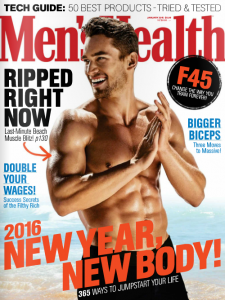
I was inspired by Leni Riefenstahl’s film ‘Olympia’ produced in 1938 in Germany as a documentary film. Parts of this film show famous dive scenes which are 4 minutes long in the first edition and then 50 seconds long in the second edition. In 1938 when ‘Olympia’ was produced advanced techniques were used including unusual camera angles, smash cuts and extreme close-ups. When looking at the images from the film ‘Olympia’ it is clear that they are all similar in a sense that they are all muscular, this is so that they can complete their sport to their full ability. The images show strong body figures, which relates to classical Greek sculptures, this is because of the masculine figures, but also because of the postures and shape of the males bodies. This image shows how the images from the film ‘Olympia’ can be related to the classical Greek sculptures because some images copy how the Greek structures have been built. Moreover this arguably shows how these muscular figures have influences younger generations, but even older generation and made them unconsciously want to have a similar body type/image. Most if not all of the position which the subjects are standing in have strong postures, a perfect form. Arguably this shows how they are strong, as are the Greek statues. In comparison to body building photos, for instance Mapplethorpe’s image of Arnold Schwarzenegger, there are similarities in how they all pose, as they all have strong body postures which show off their muscles and make them a solid structure, like a statue. As you can also see in my image which I took of my subject in the studio you can see similarities in how they are tensing their muscles to create a solid form, to make themselves as solid as possible.
The perfect form is something that we all arguably aspire to be like, even when we do not consciously think we want to look like them. When looking around in today’s modern society we are flooded with images and also knowledge on how to achieve this ‘perfect body’ that everyone talks about. Plato, one of the first philosophers proposed the idea of the theory of ‘Forms’, which is a non-material abstract. ‘When used in this sense, the word form or idea is often capitalized’. [6] Plato suggests that these forms or ideas are the ‘only true subjects of study’ [7] and he proposed that there is the perfect form or the ultimate thing to be. Plato states that everyone in this world has the perfect idea of what they want to be, and in terms of physique, everyone has the perfect body in which they aspire to look like, but Plato says that all of these things are trying to be the perfect form, so in this case they are ‘mimicking’ the perfect form. It can be questioned as to whether everyone has their own perfect form of what they want. Plato uses the idea of a triangle to relate this to, as he says that someone’s idea of the perfect form never changes over time. For example, it can be questioned as to whether over time peoples idea of the perfect body had changed since even in the BC era, and looking back at Greek statues it shows that people still seem to look up to their ‘perfect form’. The forms can be seen as perfect themselves because they do not change. The example of the triangle is described to be as to when someone draws a triangle on a piece of paper, it cannot be said to be beautiful, as it is just a triangle, however the form ‘triangle’ which allows us to understand that the picture on the piece of paper is a triangle is perfect as it is unchangeable. This is because the idea and the concept of the triangle is the same to everyone, which can be said for body image, and it can be questioned as to whether everyone has the same body images which they look up to, or as we are all individuals, whether we all have a different ‘perfect form’ which we aspire to look like.
In relation to my own images I have found Mapplethorpe to be the most influential approach to this particular style of photography. Therefore a great deal of my images reflects his interpretation of Greek statues and body building images in relation to the male physique. In this image of Mapplethorpe’s I think that this shows his mental strength as his head is the focal point of this image. The circle which the man he is can be said to metaphorically imply his strength, as a circle is a strong shape as it is never ending, this can be showing his continual aspirations to meet their goals, as bodybuilders always want to improve their bodies and be better. Similarly in my image the focal point again is the subjects head, which is different from the other photographs I have produced because they normally have been focused on the muscles and brawn of his body. Moreover the lighting of the image is comparable to the likes of Mapplethorpe’s.
Overall, I think that Greek statues have unconsciously influenced men’s perception of the perfect male form. Greek statues alongside media greatly influence how men and women think about themselves, but the idea for men to have the perfect torso is widely spoken about and published in media, therefore I think that this greatly influences the younger generations, thus making them join a gym to improve their physique. Plato’s idea of the perfect form shows how men unconsciously have a perfect form which they desire to look like, and it is questionable whether everyone has the same form or not. I think that it is clear that when we want to improve our body we do not think that our inspiration came from classical Greek sculptures, but looking back at images from 300BC I think that arguably it is clear that they have a certain degree of influence on modern society and how we view our physiques.
[1] Davidson, J (2015), ‘Naked Ambition’. The Guardian: 16-17
[2] (Mapplethorpe 2004:47)
[3] Davidson, J (2015), ‘Naked Ambition’. The Guardian: 16-17
[4] Davidson, J (2015), ‘Naked Ambition’. The Guardian: 16-17
[5] Davidson, J (2015), ‘Naked Ambition’. The Guardian: 16-17
[6] https://en.wikipedia.org/wiki/Theory_of_Forms
[7] https://en.wikipedia.org/wiki/Theory_of_Forms
QUESTIONNAIRE
For this i went around to boys and girls and asked them different questions about why they joined the gym and about why some of the boys go to the gym, i also asked some girls also because i though it would be quite interesting to see why girls go to the gym in comparison to boys. All of the people that i asked where from the ages of 17-18 and go to the gym regularly.
- Why do you go to the gym?
Boys – to build muscle/put on weight, social/see friends/interact with others, impress girls
Girls – to tone, loose weight
- Why did you begin to go to the gym in the first place?
Boys – because they were scrawny and wanted to put on weight/muscle, social, because all friends went so they felt they were out of place if they did not go, impress girls
Girls – loose weight/ tone
- What motivates you to go to the gym?
Boys – seeing other men/body builders who are muscly
Girls – to look better/model, to get into clothes that they want to wear
- If you were offered performance enhances would you take them? if answers yes/no why?
Boys – most boys said no, they said this because they said it would shrink their balls/penis, one of the boys said they would take a full cycle to get themselves into the momentum to work out harder and give them more strength but then they would not carry it on, another boy said that they would if they were offered them free as it would help them lift heavier, and put on more muscle
Girls – no, unless it would help them loose weight/get toned faster
- What do you think peoples perceptions of you are?
Boys – lad, muscly, gym addict, always goes to the gym
Girls – fat, round ball, small, slim
- Find a picture online of what you want to look like at the end of your ‘fitness journey’






I think that from asking these questions the main thing that i found out was that the main reason boys go to the gym is to build muscle and to look bigger, or to get the perfect six pack that they see loads of other males/body builders have that they would want to look like. It was also interesting to see the comparison between the girls who go to the gym, the main difference was that boys go to the gym to put on weight whereas girls go to loose weight as they believe they are fat and also go because they want to tone up.
BIBLIOGRAPHY
Mapplethorpe. R (2004), Robert Mapplethorpe and the Classical Tradition, New York: Guggenheim Museum Publications
Davidson, J (2015), ‘Naked Ambition’. The Guardian: 16-17
Lenman. R (2005), The Oxford Companion Photograph, Oxford New York: Oxford University Press
Muybridge. E (1995), The Human Figure in Motion, New York: Dover Publications
PLATO AND THE PERFECT FORM
Plate was on of the first philosophers, he proposed the idea of theory of Forms or theory of ideas, this is a non-material abstract. ”When used in this sense, the word form or idea is often capitalized’. Plato suggests that these forms or ideas are the ‘only true objects of study’ and he proposed that there is the perfect form or the ultimate thing to be. Plato states that everyone in this world has the perfect idea of what they want to be, and is terms of physique, everyone has the perfect body in which they aspire to look like, but Plato says that all of these things are trying to be the perfect form, so in this case they are ‘mimicking’ the perfect form. It can be questioned as to whether everyone has the perfect form in which they want to aspire to look like, or whether everyone has their own perfect form of what they want. Plato uses the idea of a triangle to relate this to, as he says that someones idea of the perfect form/their perfect form never changes over time. For example it can be questioned as to whether over time peoples idea of the perfect body has changed since even in the BC era, and looking back at Greek statues it shows that people still seem to look up to their ‘perfect form’. The forms can be seen as perfect themselves because they do not change. The example of the triangle is described to be as to when someone draws a triangle on a piece of paper, it cannot be said to be beautiful, as it is just a triangle, however the form ‘triangle’ which allows us to understand that the picture on the piece of paper is a triangle is perfect as it is unchangeable. This is because the idea and the concept of the triangle is the same to everyone, which can be said for body image, and it can be questioned as to whether everyone has the same body image which they look up to, or as we are individuals we all have a different ‘perfect form’ which we aspire to look like.

LENI RIEFENSTAHL – OLYMPIA
Olympia is a film produced by Leni Riefenstahl in 1938. This film is a German documentary film, documenting the Summer Olympics in 1936, which was held in the Olympic Stadium in Berlin, Germany. There are three versions of the film, one in English, French and German, each versions are slightly different from one another. Some of the differences are that in one of the languages is that in one of the first released one the famous dive scene was 4 minutes long and Riefenstahl re-edited this and changed it to 50 seconds long. This entire scene could be seen in prints also. There are two parts to the film: Olympia 1. Teil – Fest der Volker (Festival of Nations) and Olympia 2: Teil – Fest de Schonheit (Festival of Beauty). This was the first documentary feature film that was ever made of the Olympic Games. At the time this was produced the motion pictures which were used were advanced, however later on these became industry standards, compared to how they were advanced motion pictures at the time. These advanced techniques include unusual camera angles, smash cuts, extreme close-ups. Olympia has been said to be a controversial film due to its political context, however it appears on many list of the greatest films.
When looking at the images from the film Olympia it is clear that they are all similar in a sense that they are all muscular, this is so that they can complete their sports to their full ability. The images which have been taken from the film Olympia the body figures are strong images, and i think that this can relate to the classical Greek structures because of the masculine figures, but also because of the postures and shapes of the competitors body.

This image shows how the images from the film Olympia can be related to the Greek classical structures because some images copy how the Greek classical structures have been build. This can be said to show how these muscular figures have had an influence on the younger generations but even the older generations and made them want to have a similar body type/image. Some of these images that i found from the film show the muscular body but also the sport that they are doing in the Olympics. All if not most of the positions which the people are standing in or doing their sport in have strong postures/perfect form. Which i think this can show the relation to the Greek structures as they are almost strong like the statues.
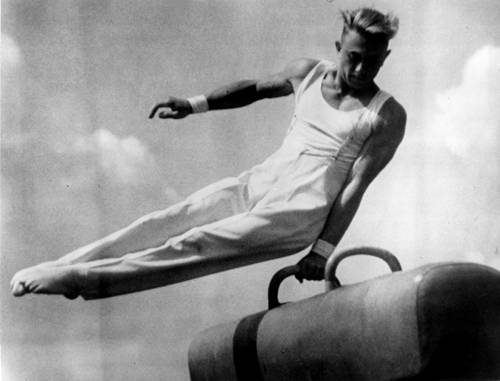

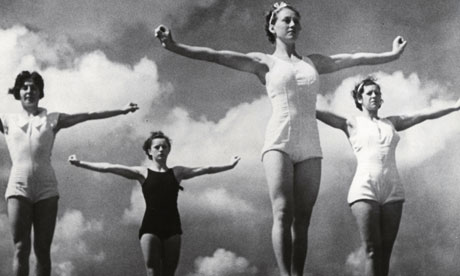

ROBERT MAPPLETHORPE
Greek classical sculptures/ ideal forms
Images and icons:
Mapplethorpe’s pictures and self-portraits are described as ‘photography’s handmade nature’. His images show the history of art and the movement of the muscular body.
‘While we may admire the form, the grace, of a sculpted nude, when we learn its name, say Apollo or Hermes, our comprehension of the significance of the form blossoms to include a narrative that lies beyond the plainly visual’
‘I went into photography because it seemed like a perfect vehicle for commenting on the madness of today’s existence’
‘I have boundless admiration for the naked body. I worship it… sometimes, looking at a model, you think you have found nothing. Then, all at once, little by little, nature reveals itself, a strip of flesh appears, and the shred of truth conveys the whole truth and enables you to rise at a single bound, to the absolute principle of things’ (Mapplethorpe 2004: 47)
ROBERT MAPPLETHORPE AND THE CLASSICAL TRADITION

In Robert Mapplethorpe’s book ‘Robert Mapplethorpe and the classical tradition’ he focuses on images from around the 16th century of Greek classical structures and sculptures of men but also women. The people in these images are very muscular, which when taken in the 16th century it is not something that you would think everyone would be interested in looking like. Also these images from the 16th century raise questions as to whether this is why people nowadays have been so interested in going to the gym and getting them self the ‘perfect/ideal’ body that they want. When going through the book most of the images are from the late 16th century in part of the book but parts are also of Robert Mapplethorpe’s images which he has taken of body builders, most of which are of the body builders naked, from different angles. In these images it shows the different muscles of the body builders. Some of the images are portraits of the bodybuilders or of different people, these images show the faces of the bodybuilders. Most of Robert Mapplethorpe’s images he is trying to replicate the images from the late 16th century to show the human physique.



ESSAY PLAN – PERSONAL STUDY
Title/question: The essay should focus on the title or question which i am addressing for this personal study. The title needs to involve the idea of Greek mythology/ the ideal body but also the idea of males being so obsessed with the gym.
Introduction: In my introduction i will explain the main body of my essay and what i am trying to discuss. The beginning paragraph will begin with a quote, and will contain artist movements and other photographers which i have been influenced by.
Essay ideas:
- How the idea of the perfect body is explored through the idea of Greek Sculpture
- How the idea of the perfect body is explored
Paragraph ideas:
- How photographers capture movement (Eadweard Muybridge’s chronotopia – the human figure in motion – illustrations
- How Greek sculptures have presented the human body since BC to give us the idea of the ideal form
- How we have been presented with the perfect form/ultimate thing to be (Plato)
- Why younger men are getting more interested into the gym/ more into fitness
- How males are presented in photography / media
Planning stage:
The essay needs to follow a strict structure, where i focus on the thing i want to discuss one after the other. I will discuss my essay title and have a topic of discussion for each paragraph. I will be hoping to have 4-5 large paragraphs which i will discuss my essay in extra detail.
CAPTURING MOVEMENT
Time photography
The idea ‘chronophotography’ was invented by French physiologist Etienne-Jules in the 1880’s, Jules did this so he could make accurate physiological analyses of movements, this term was also later applied to a range of images that are in a sequence. These were used by scientists to help analyse how the human body worked while we moved. Scientists began to make single-place chronophotographs, where multiple image were taken on one plate which overlapped one another. In the late 1850’s the measurement of the duration of an electric spark was measured by Bernhard Feddersen. Multi-plate chronophotography was later used, this is where a full range of movements was recorded on a series of individual photographic plates, this was first invented by using a battery of separate cameras, this was first introduced by Eadweard Muybridge. Movements were later captured in the 19th century where it was found that chronophotography methods could be reproduced into an illusion of natural movement, for example in a zoetrope, a zoetrope is a ‘optical toy consisting of a cylinder with a series of pictures on the inner surface that, when viewed through slits with the cylinder rotating, giving an impression of continuous motion’. https://www.google.com/search?q=zoetrope+definition&oq=zoetrope+definition+&aqs=chrome..69i57.1895j0j7&sourceid=chrome&es_sm=122&ie=UTF-8&surl=1&safe=active
The four main figures of choronophotography are Muybridge, Marey, Ottomar Anschutz, and Georges Demeny.
Eadweard Muybridge took a series of chronophotography images of someone riding a horse, and Muybridge was the first person who found out that when a horse galloped that at one point when the horse is galloping, all of the horses hooves are off the floor at one time, so at one point the horse is completely off the floor. Muybridge’s images were mainly used for scientific basis, as Muybridge was a photographer, his works were used for scientific study. To make this image of the horse Muybridge lined a raceway with 15-foot sheeting, which lines were also drawn at 21-inch intervals. While the horse raced the 12 cameras took the images as the horse rushed past.



Muybridge inspired others such as Marey, he was interested in human and animal locomotion, and he was influenced to experiment using photography. Marey invented a gun camera which he used in the early 1880’s, this made exposures fast enough to record the bodily movements of a bird flying.

